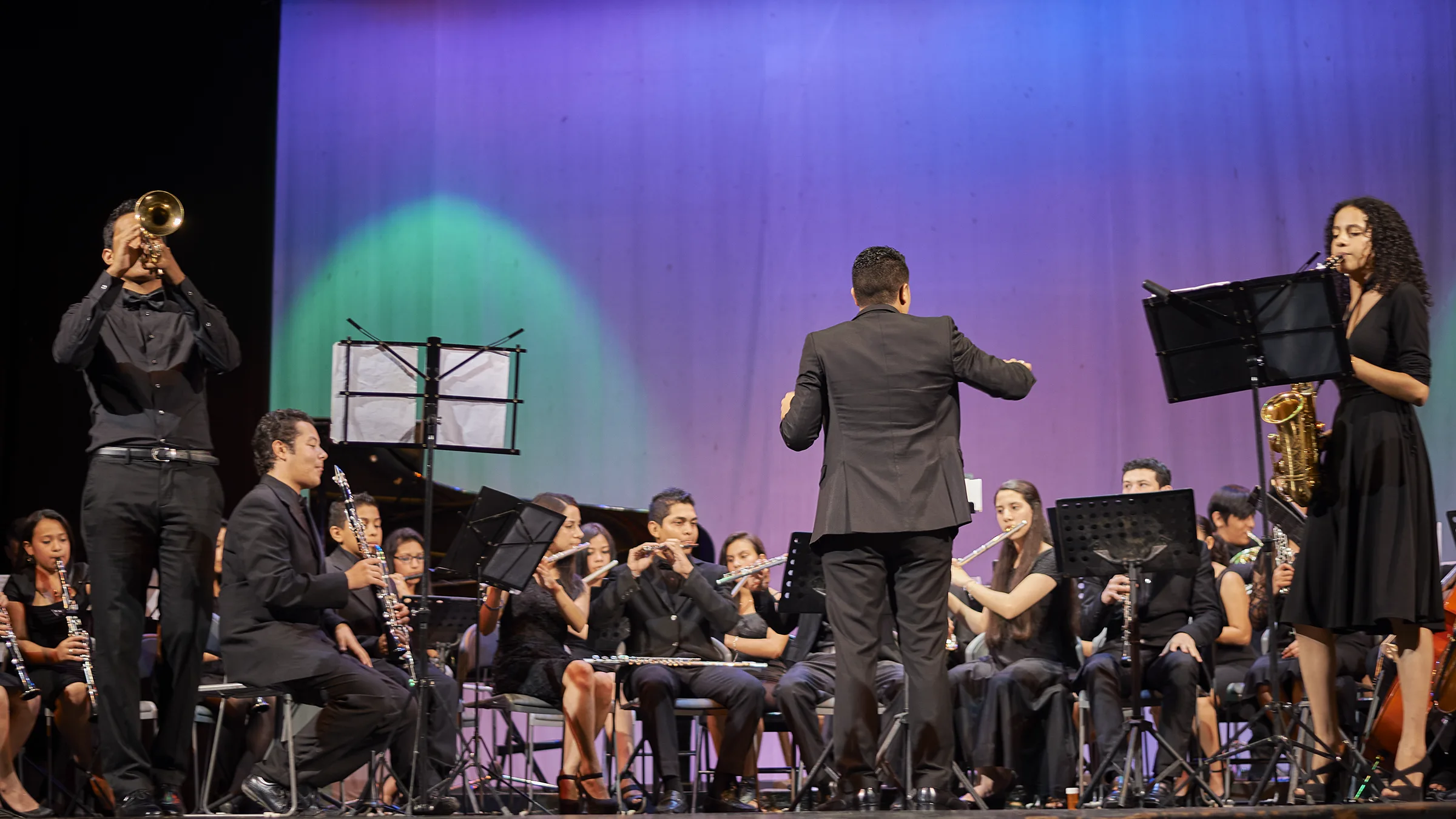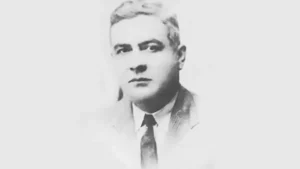History of the National Anthem of Honduras

For 94 years, Honduras did not have an official anthem. From independence in 1821 to 1915, the song «La Granadera« was officially sung in all civic and public acts.
It was in the administration of President and General Manuel Bonilla, who commissioned the Honduran poet Augusto Constantino Coello to write the lyrics of the Honduran National Anthem, in addition to commissioning the music teacher Carlos Hartling the musical arrangements.
On the recommendation of the commander of arms, General Don Alfonso Gallardo, the music was arranged to be performed by the Band of the High Powers, a task that was carried out with good success. Heard by President Manuel Bonilla, he was so impressed that he ordered the musical work to be printed for distribution throughout the country.
The National Anthem of Honduras recounts in chronological order the history of our country, from the pre-Columbian period, discovery, conquest, colonization and the proclamation of independence in 1821. Thus constituting a chronological allusion of the main historical events and phenomena, beginning with the pre-Columbian existence and ending with the organization of the free, sovereign and independent State.
The National Anthem of Honduras in relation to the other anthems of Central America is eminently poetic and pacifist, with the exception of the last stanza that invites us to defend the Homeland, it is less extensive than that of Guatemala and El Salvador, and its music is inspired by the German marches.

See Lyrics and Music of the National Anthem of Honduras (Video)
Interpretation for the first time of the National Anthem of Honduras
The first time the Honduran National Anthem was sung was on September 15, 1904 by the students of the Escuela Normal de Señoritas, but it was premiered at the Guadalupe Reyes School in Tegucigalpa and directed by teacher Carlos Hartling.
He was executed again at a meeting of presidents of Central America in Amapala on November 13, 1907, and since then singing his notes is a duty of Hondurans.
Since the second administration of General Manuel Bonilla in February 1912, the lyrics and music have been popularized and sung in every official act.
Decree No. 42
On November 13, 1915, under Decree No. 42, the President of the Republic, Dr. Alberto Membreño, gave official life to the National Anthem, being Minister of Education at that time Dr. Rómulo Ernesto Durón. The execution in special acts was from 1917.
Who were the authors of the Honduran National Anthem?
- The lyrics: The poet Augusto C. Coello was responsible for writing the lyrics of the National Anthem of Honduras.
- The music: The music teacher Carlos Hartling, was in charge of composing and making the musical arrangements.
- The argument: The author of the argument is Mr. Gualberto Cantarero Palacios.
Musical movements of the National Anthem
The Honduran National Anthem must be marked following four movements beginning on the fourth beat of the measure:
- First move (beat) down
- Second move (beat) to the left
- Third move (beat) to the right
- Fourth move (beat) up.
The music presents intonation difficulties for male voices, the notes being more easily attainable by female voices.
Criticism of the National Anthem of Honduras
As for the letter, it is attributed to him that the poem is very extensive; however, there are several national anthems of America that are longer than ours, for example: The anthems of Argentina, Colombia, Uruguay and Brazil.
As for the music, it is stated that it has been branded as incongruous, inappropriate, without a high rhythm and without a masculine character that expresses the attributes of the Honduran nation.
We affirm that the National Anthem of Honduras is original because from the literary point of view, unlike other poetic compositions, it narrates the different stages of our country’s history and from the musical point of view we can affirm that it does not partially or totally resemble the hymns from other countries.
Aspects of the National Anthem of Honduras
- HISTORICAL: In chronological order from the first to the sixth stanza, it tells us about events that have occurred since pre-Columbian times to the present day.
- PATRIOTICO: For its seventh and last stanza
- LEGAL: Because it is covered by its two decrees that for us Hondurans are laws, these two decrees are number 42 of its issuance and decree number 34 of its approval.
-
ARTISTIC: For its lyrics and music. In the lyrics we find a beautiful poem and in the music with an extraordinary musical work.
After the National Anthem has been interpreted, the director of the school or institute must proceed to the swearing-in of the Flag.
Decree by which the use of the National Anthem is legalized
Decree No. 42.
ALBERTO MEMBRENO. Constitutional President of the Republic,
WHEREAS: Of the Republics of Central America, Honduras is the only one that
lacks a recognized National Anthem; Y
WHEREAS: To date, the one made up of Messrs
. Augusto C. Coello and Carlos Hartling has been considered as such.
THEREFORE:
IT DECREES:
Single Item. Declare as the National Anthem of the Republic of Honduras the one with the lyrics by Don Augusto C. Coello and music by Don Carlos Hartling.
Given in Tegucigalpa, at the National Palace, on the third day of the month of November, nineteen hundred and fifteen.
ALBERTO MEMBRENO
Pedro A. Medar
The Secretary of State in the Office of the Interior and Justice.
Rómulo E. Durón.
The Secretary of State in the Office of Public Instruction.
Agreement that regulates the cases in which the National Anthem may be sung
Tegucigalpa, November 15, 1917.
The president of the Republic.
WHEREAS: Being the National Anthem the highest expression of the feeling of
the Homeland, it should be executed only in those official acts that are of
great public solemnity.
THEREFORE
AGREE
1.- That the National Anthem will be played or sung only in the following cases:
a.- In the act of raising and lowering the National Pavilion, the same as in any act of military service or civic festivity in which the honors must be done;
b.- At the opening or closing of sessions of the National Congress, at the entrance and exit of the President of the Republic;
c.- In the public receptions of the Ministers and Diplomats;
d.- In the ceremonies when the President of the Republic enters and leaves;
e.- In the act of honoring the National Congress in its entirety and the Supreme Court of Justice in plenary session;
f.- When the high-ranking Hierarchs of the Government address the Honduran people, either by radio or television (the last of the regulations);
g.- In every civic act in which tribute is paid to the Homeland.
2.- The civil and military authorities will ensure strict compliance with this agreement and will impose the corresponding punishment on offenders.
COMMUNICATE.
F. BERTRAND
The Secretary of State in the Office of the Interior and Justice.-
Francisco J. Mejia
References
- Lyrics and Music of the National Anthem of Honduras (Video)
- Civic questionnaire on the National Anthem of Honduras
- Explanation of the National Anthem of Honduras
- Biography of Augusto C. Coello
- Biography of Carlos Hartling



